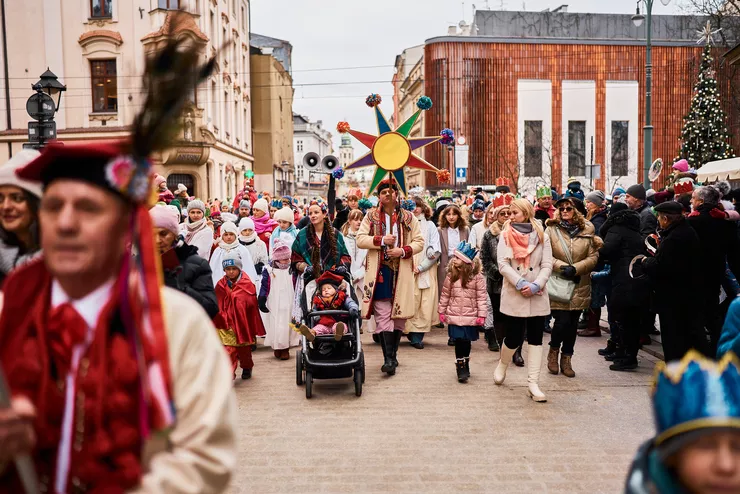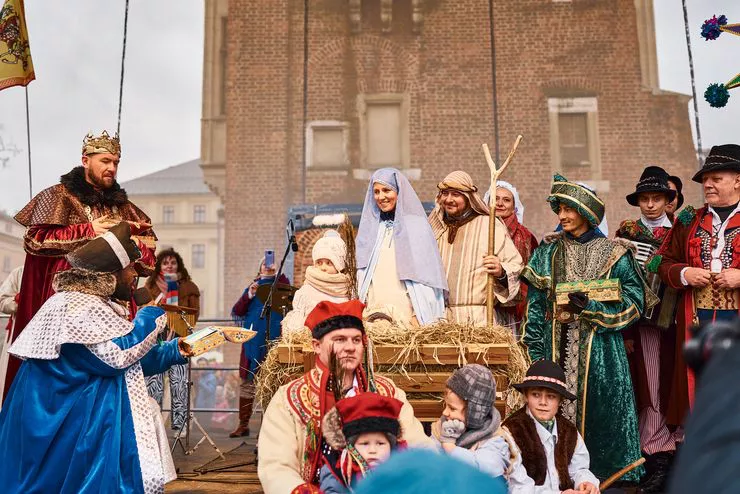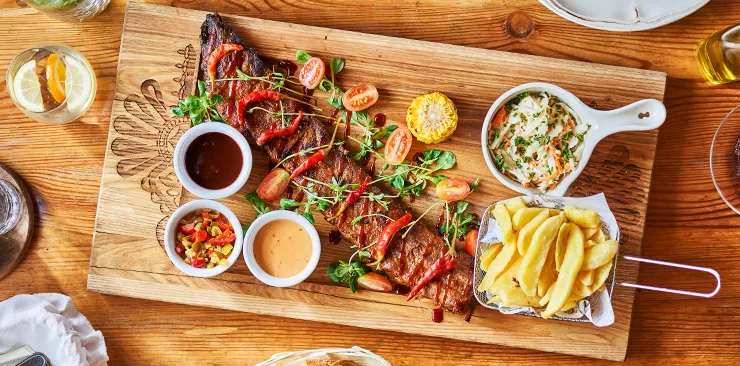





Following the Yonder Star.
The Feast of the Epiphany on 6 January, known in Poland as the Three Kings’ Festivity – Święto Trzech Króli – has sparked many customs in Małopolska. Recently, their number has been joined by big parades in the cities and towns. And Kraków boasts as many as three of them each year.

As in many other regions, during the Christmas season and especially at its beginning and end, carolling mummers known as kolędnicy go from door to door in many villages in Małopolska, singing Christmas carols, cavorting, and playing funny tricks. Considered the bringers of good luck, these messengers from a distant world are eagerly let in not only because they bring the Good News to families and sing a carol or two. Their visits are closely related to the pre-Christian Gody, or Koliada, and its “ancient magic”. The kolędnicy lineup usually includes a horned animal figure, originally an aurochs but recently more often resembling a goat: a symbol of fertility and an omen of a rich harvest in the olden days. The Christian tradition added King Herod, fittingly and accurately captured by the Devil and delivered to Death, as the light side – represented by the Angels and the child with a colourful star – wins in the end.
In turn, even if its pedigree reaches the Star Singers from the days of the Synod of Konstanz in 1417, the Three Kings Parade walking the streets of cities is a recent tradition as it only started fifteen years ago. In Kraków, the merry carollers wearing paper crowns walk not in one but in three processions. The blue or African one starts at plac Matejki to be intercepted by the Barbican by King Herod who tries to bar it from entering the perimeter of city walls. The green or Asian procession begins by the Salesian Monastery in Dębniki, not far from the where Karol Wojtyła, later pope John Paul II, lived during the Second World War. The red or European parade gathers by the Cathedral to descend into the city from Wawel Hill. Although the meeting of the three kings in the Main Market Square is streamed live on the Internet, it is much merrier to be part of this merry crowd. Just pick your colour and route.
The entire event doubles as a charity fundraiser, not unlike the Cavalcade of Magi organised on the eve of Epiphany in many cities of the Spanish-speaking world.
In Poland, the Christmas season does not end on Epiphany, though no carols are sung in many churches after that day. Its last day is Candlemas on 2 February, 40 days after Christmas.








